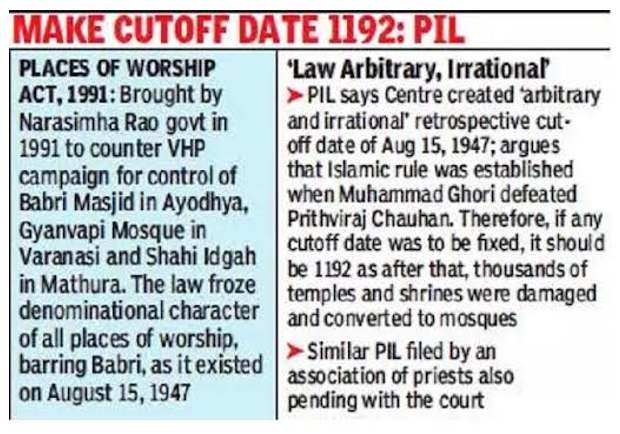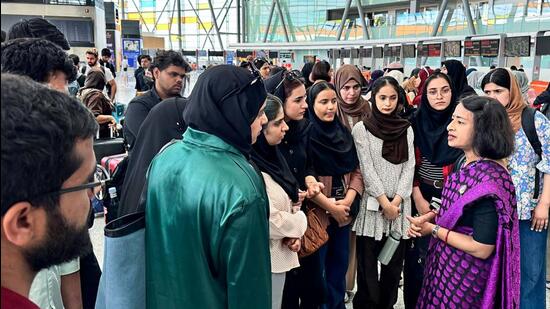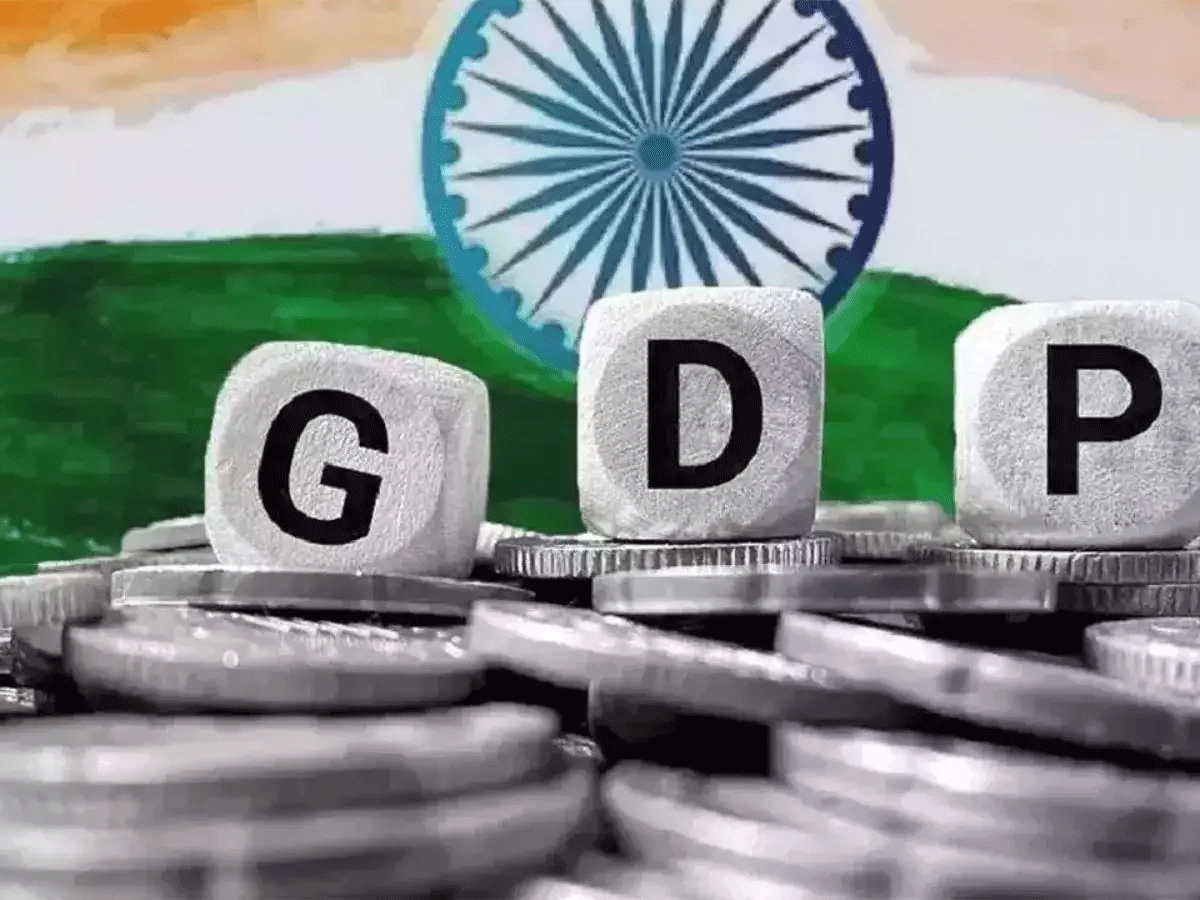- Courses
- GS Full Course 1 Year
- GS Full Course 2 Year
- GS Full Course 3 Year
- GS Full Course Till Selection
- Answer Alpha: Mains 2025 Mentorship
- MEP (Mains Enrichment Programme) Data, Facts
- Essay Target – 150+ Marks
- Online Program
- GS Recorded Course
- Polity
- Geography
- Economy
- Ancient, Medieval and Art & Culture AMAC
- Modern India, Post Independence & World History
- Environment
- Governance
- Science & Technology
- International Relations and Internal Security
- Disaster Management
- Ethics
- NCERT Current Affairs
- Indian Society and Social Issue
- NCERT- Science and Technology
- NCERT - Geography
- NCERT - Ancient History
- NCERT- World History
- NCERT Modern History
- CSAT
- 5 LAYERED ARJUNA Mentorship
- Public Administration Optional
- ABOUT US
- OUR TOPPERS
- TEST SERIES
- FREE STUDY MATERIAL
- VIDEOS
- CONTACT US
The Places of Worship Act, 1991
The Places of Worship Act, 1991
14-07-2023

Latest Context:
Recently, the Supreme Court adjourned (postponed to a future date) a case regarding the validity of the Places of Worship Act of 1991 and asked the central government to clarify its stand on this matter by 31st October, 2023.
About the Places of Worship Act, 1991
- Before 1991, there were a lot of disputes going over many religious places in India and a lot cases were pending on these matters in different-different courts of the country.
- To overcome this, Parliament of India passed this act in 1991.
- The primary objective of this act was to freeze the status of religious places as it existed on 15th August 1947 (the day India gained independence from British rule).
- In other words, the act aimed to maintain the religious character of places of worship as it stood at the time of independence and prevent any changes or conversions that occurred after that date.

Major Provisions of the Act are:
- Prohibition of Conversion (Section 3)
- Maintenance of Religious Character (Section 4(1))
- Cancellation of Pending Cases (Section 4(2)): The act declares that any legal proceedings related to disputes over religious places that were pending before August 15, 1947, shall stand cancelled. This means that, such legal cases will no longer be heard by the court and the status of the religious place will be preserved as it was on the day of India’s independence.
- Exceptions to the Act (Section 5):
a) This act does not apply to sites covered under Ancient Monuments and Archaeological Sites and Remains Act, 1958.
b) The act does not extend to the dispute of Ram Janmabhoomi-Babri Masjid in Ayodhya.
Arguments in favour of Act are:
- Preserving Communal Harmony: Primary argument in favour of this act is that it helps in maintaining communal harmony and religious peace by freezing the religious status of places of worship. By doing so, the act seeks to prevent disputes and conflicts over religious sites, which could otherwise lead to tensions among different religious communities.
- Upholding India's Secular Character: The act is seen as a measure to uphold the secular character of India as mentioned in its Constitution. By protecting the religious places and preventing their conversion, the act reinforces the principle of secularism, ensuring that the state remains neutral and treats all religions equally.
- Legal Certainty and Finality: The act provides legal certainty and finality to the status of religious places as it stood on August 15, 1947. By cancelling pending legal proceedings related to religious disputes, it puts an end to a large number of cases going in courts.
- Safeguarding Historical and Cultural Heritage: Many religious places in India hold significant historical and cultural value. By freezing their religious status, the act seeks to protect and preserve these heritage sites in their original form, ensuring that they remain as symbols of India's rich and diverse cultural past.
Arguments against the Act are:
- Violation of Secularism: Some critics argue that the act goes against the principle of secularism mentioned in the Indian Constitution. By freezing the status of religious places as it existed on a specific date, the act is seen as favouring certain religions over others and interfering with the secular fabric of the country.
- Unfair Freeze on Historical Claims: Main argue that freezing the status of religious places as it was in 1947 ignores historical and cultural claims of different religious communities. It may lead to situations, where historically significant places of worship are not accessible to the religious communities that originally built or used them.
- Hindrance to Justice: The act's provision to cancel pending legal proceedings related to religious disputes is seen as denying justice to parties involved in such cases. By cancelling these cases, it may prevent a fair resolution of longstanding disputes.
- Undermining Judiciary's Independence: Opponents argue that by interfering in pending legal cases, the act undermines the independence of the judiciary. Decisions related to religious disputes should be solely within the domain of the courts, and the legislature's interference raises concerns about the separation of powers.
- Justifying Historical Injustices: Some critics argue that freezing the status of religious places as it was in 1947 justifies the historical injustices that may have occurred before that date. It may overlook past wrongdoings, such as forcible conversions or destruction of places of worship, without addressing them appropriately.
- Potential for Political Misuse: Critics express concerns that the act could be politically misused to manipulate religious sentiments and polarize communities for electoral gains.
Conclusion Way Forward:
At present, it is important to undertake a thorough review of this act to address criticisms and shortcomings and to ensure that the act does not restrict judicial review.
Must Check: IAS Coaching Centre In Delhi



